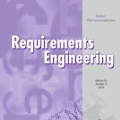
Context: Regulatory acts are a challenging source when eliciting, interpreting, and analyzing requirements. Requirements engineers often need to involve legal experts who, however, may often not be available. This raises the need for approaches to regulatory Requirements Engineering (RE) covering and integrating both legal and engineering perspectives. Problem: Regulatory RE approaches need to capture and reflect both the elementary concepts and relationships from a legal perspective and their seamless transition to concepts used to specify software requirements. No existing approach considers explicating and managing legal domain knowledge and engineering-legal coordination. Method: We conducted focus group sessions with legal researchers to identify the core challenges to establishing a regulatory RE approach. Based on our findings, we developed a candidate solution and conducted a first conceptual validation to assess its feasibility. Results: We introduce the first version of our Artifact Model for Regulatory Requirements Engineering (AM4RRE) and its conceptual foundation. It provides a blueprint for applying legal (modelling) concepts and well-established RE concepts. Our initial results suggest that artifact-centric RE can be applied to managing legal domain knowledge and engineering-legal coordination. Conclusions: The focus groups that served as a basis for building our model and the results from the expert validation both strengthen our confidence that we already provide a valuable basis for systematically integrating legal concepts into RE. This overcomes contemporary challenges to regulatory RE and serves as a basis for exposure to critical discussions in the community before continuing with the development of tool-supported extensions and large-scale empirical evaluations in practice.
翻译:暂无翻译




